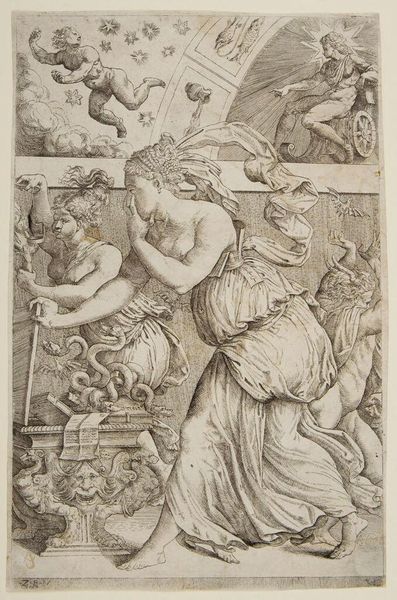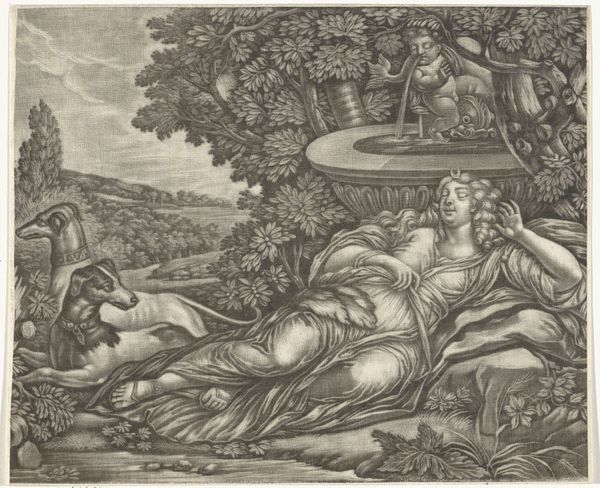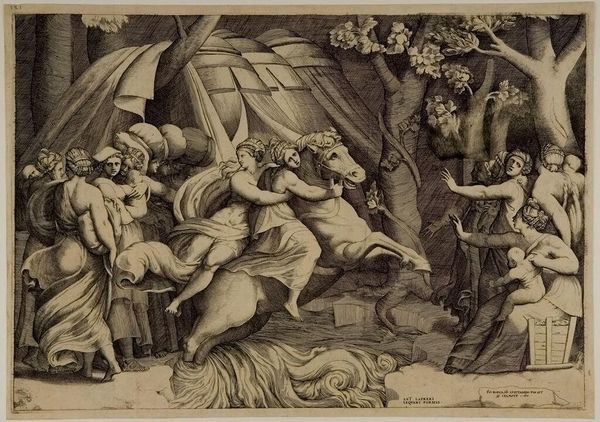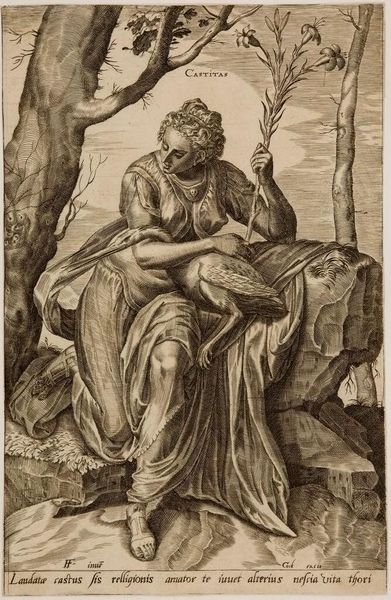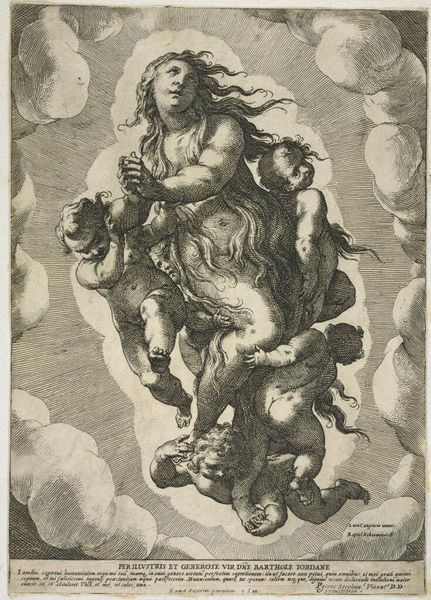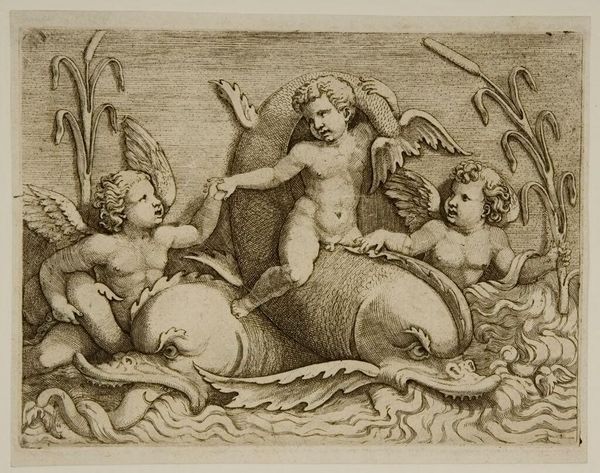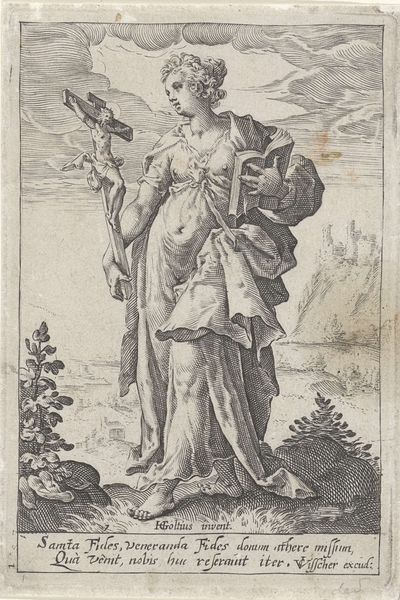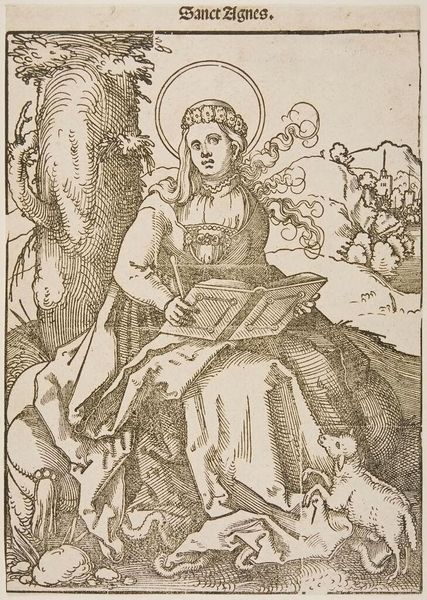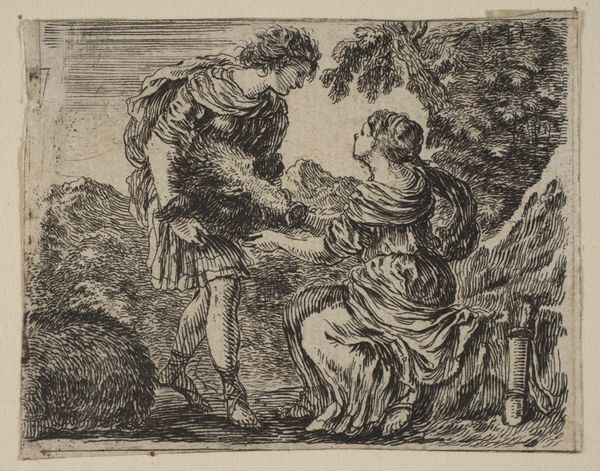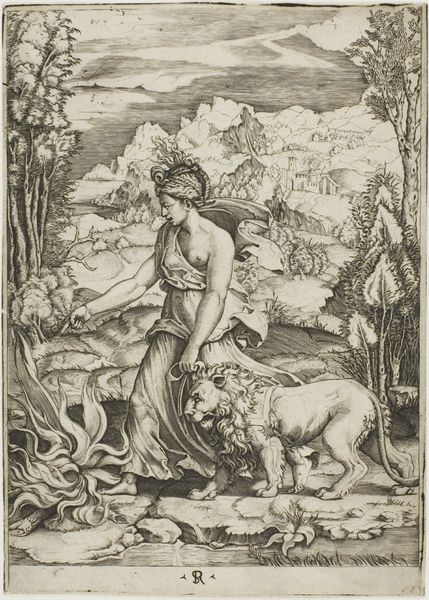
tempera, painting, fresco
#
portrait
#
narrative-art
#
tempera
#
painting
#
figuration
#
fresco
#
oil painting
#
christianity
#
italian-renaissance
#
angel
Copyright: Public domain
Curator: Let’s explore a detail from Benozzo Gozzoli's fresco, painted circa 1461, titled "Angels Worshipping." It’s tempera on plaster, quite stunning even in this fragmentary state. Editor: The angel’s presence strikes me immediately – a figure of quiet contemplation amidst the natural world. Those rust-colored wings with dark spots make such a bold visual statement, too. Curator: Indeed. The use of color here is very deliberate. We have to remember that Gozzoli worked within a complex system of patronage and that this chapel would have been an expression of Medici power and piety. The gilding, now lost in areas, would have amplified that message. Editor: So the very pigments, the ultramarine for Mary’s cloak in the full fresco, were displays of wealth as well as devotion, creating hierarchies visible even to the illiterate? Curator: Precisely. But look at the angel's face, the gentle curve of the neck. These refined features demonstrate Gozzoli’s mastery and contribute to the painting's spiritual appeal. What about this angel's apparent engagement with nature, specifically, speaks to you? Editor: Well, there is that lovely and gentle reach towards something we can't fully see at the bottom of the cropped image; also, his presence as a gentle flute player brings nature to life. It is, of course, visually arresting that the figure's wings adopt nature as inspiration, as the bold choice calls into question who and what "god" is in Renaissance Florence. Curator: An excellent point! We can interpret that as emblematic of humanist thought, newly integrating classical ideals and earthly observation into the established religious framework. Editor: Ultimately, I find myself moved by how the piece merges earthly beauty with spiritual ideals, subtly interrogating dominant hierarchies of power. Curator: It’s a testament to Gozzoli’s skill that this fragment continues to inspire such layered readings even today. Editor: Agreed; and in understanding these elements we are left considering our role in perpetuating those dominant hierarchies today, are we not?
Comments
No comments
Be the first to comment and join the conversation on the ultimate creative platform.
